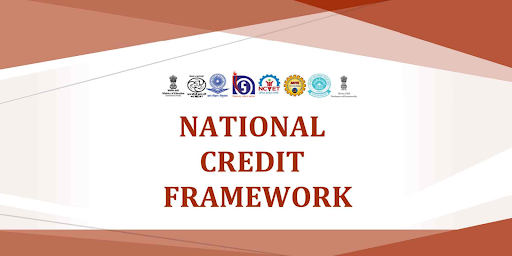NAAC Rating and Significance of Digital Classrooms
On November 3, 2022
Following the vision of the National Education Policy(NEP) 2020, making education more holistic and practical with an emphasis on the integration of general education, vocational education, and experiential learning, Union Education Minister Dharmendra Pradhan unveiled the initial draft of the National Credits Framework (NCrF) on October 19, 2022, and invited nationwide public discussions and suggestions on the proposed document.
“NCrF will be a game changer in our Education System by creating multiple avenues for a student’s progress and integrating school with higher education, vocational education and experiential learning to mainstream skilling and vocational education,” stated the Union Minister.
What is the National Credit Framework (NCrF)?
The NCrF is a framework proposed by GoI aiming to introduce a Universal Credit Point based education ecosystem throughout the country. According to the framework, students from kindergarten through post-graduate levels would receive credit points for the hours they put in during the academic year.
It has been decided that 1,200 ‘Notional Learning Hours’ total each year will be used to assign credits for school, higher education, and vocational education and skilling, for which students and learners would receive a total of 40 credits.
For the purpose of credit calculations, 30 learning hours will be counted as one ‘credit’.
What are ‘Credits’ under the NCrF?
According to the proposed document, credits are essentially a “recognition that a learner has finished a prior course of learning, corresponding to a qualification at a specific level.”
In other terms, it is a method for measuring learning outcomes. Academic Bank of Credits, or ABC, which functions similarly to a commercial bank, allows students to digitally deposit their credits and redeem them as needed. The ability to switch between courses or institutions midstream or to re-enter the educational system after quitting without losing years is made possible by credits.
30 learning hours = 1 ‘redit.
Additionally, the framework will rank the students depending on their academic standing and the credit points they acquire. For instance, a student who has completed grade 12 will be at level 4, a graduate with a 3- or four-year Bachelor’s degree will be at level 5.5 and level 6, respectively, and the student with the highest ranking, a PhD, will be at level 8.
National Credit Framework for Higher Education
In the Higher Education bracket, Beyond the set number of credits necessary for a course, students will be able to further earn credits through training and skill development, project work, field trips, on-the-job training, internships, or any other relevant experience and professional abilities obtained. To promote extensive use of technology, assignment of credits has been enabled for digital, blended learning, vocational education and distance learning options as well.
NEP 2020 emphasizes ‘practical knowledge’ or learning by doing and includes weightage for relevant experience and proficiency levels achieved by a learner. It includes Internships, Job Training, Field Visits, and Industry Collaboration by institutions. The credits, their weightage, and the programmes must also be aligned with the National Higher Education Qualification Framework (NHEQF).
Benefits of NCrF for Various Stakeholders
Students:
• Getting a multidisciplinary education with a flexible curriculum.
• Removal of hard distinction between fields like arts, science, social sciences, and commerce.
• Enhanced scope of core learning to get both theoretical and practical knowledge.
Industry:
- Re-skilling and Upskilling of existing employees.
- Training students and making them more employable while at college.
- Creating a multi-sectoral skilled pool of employable workforce.
Institutions:
• Promoting stronger collaboration between institutions.
• Increasing focus on research and innovation.
• Promoting digital learning, blended learning, and open distance learning.
• Leveraging the institutional infrastructure.
On the whole, the NCrF is expected to assist the government in increasing student enrollment, helping to fulfil the national vision of transforming India into the Skill Capital of the World.
[Dear Readers,
upGrad Campus solves 2 key issues faced by almost every HEI in the country: Classroom Infrastructure and Industry-Relevant Curriculum with its offering. If you want to be a part of Next-Gen Institution, get in touch with us today at campus.sales@upgrad.com or just drop us a line on WhatsApp.]


